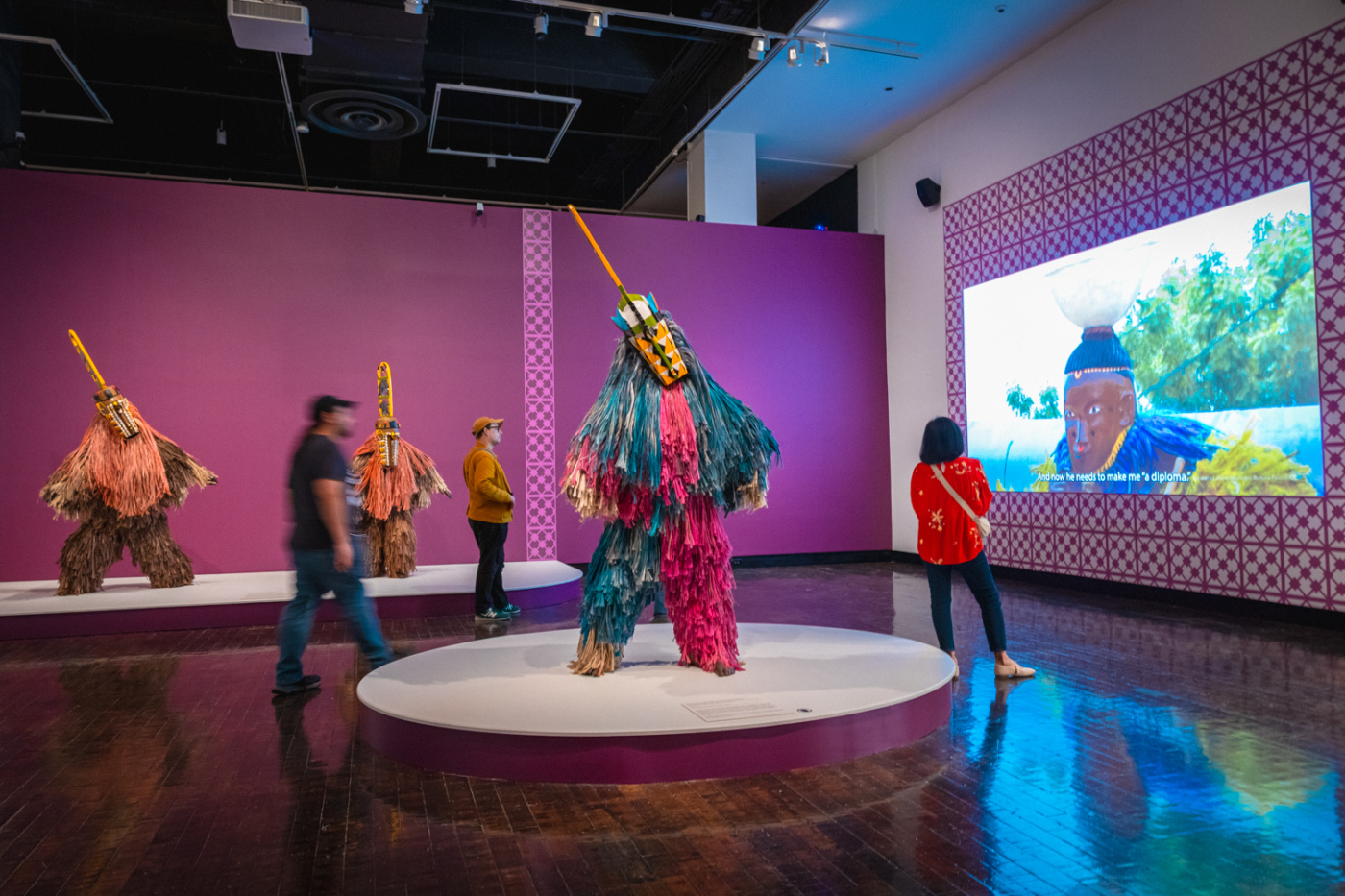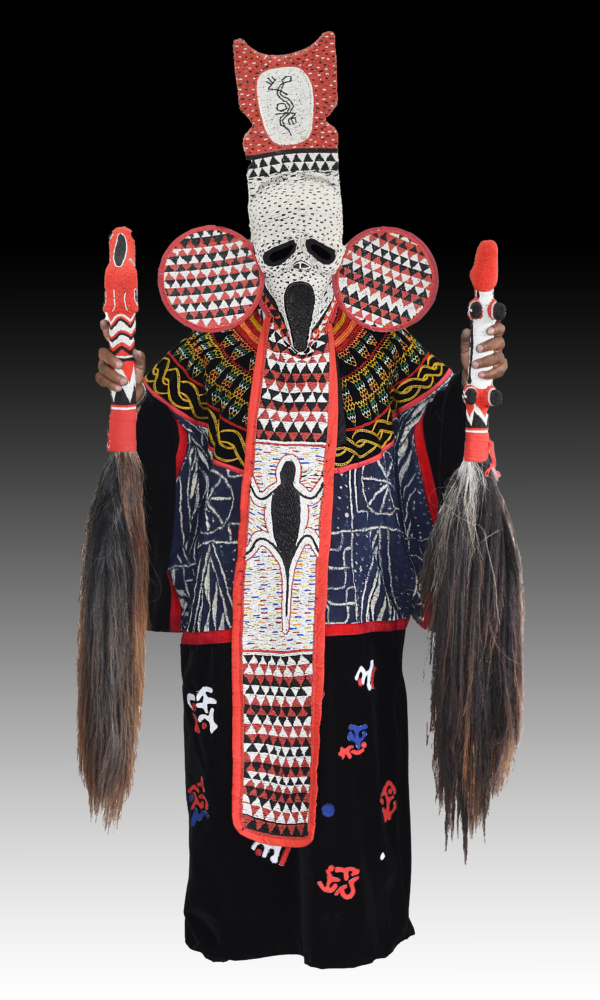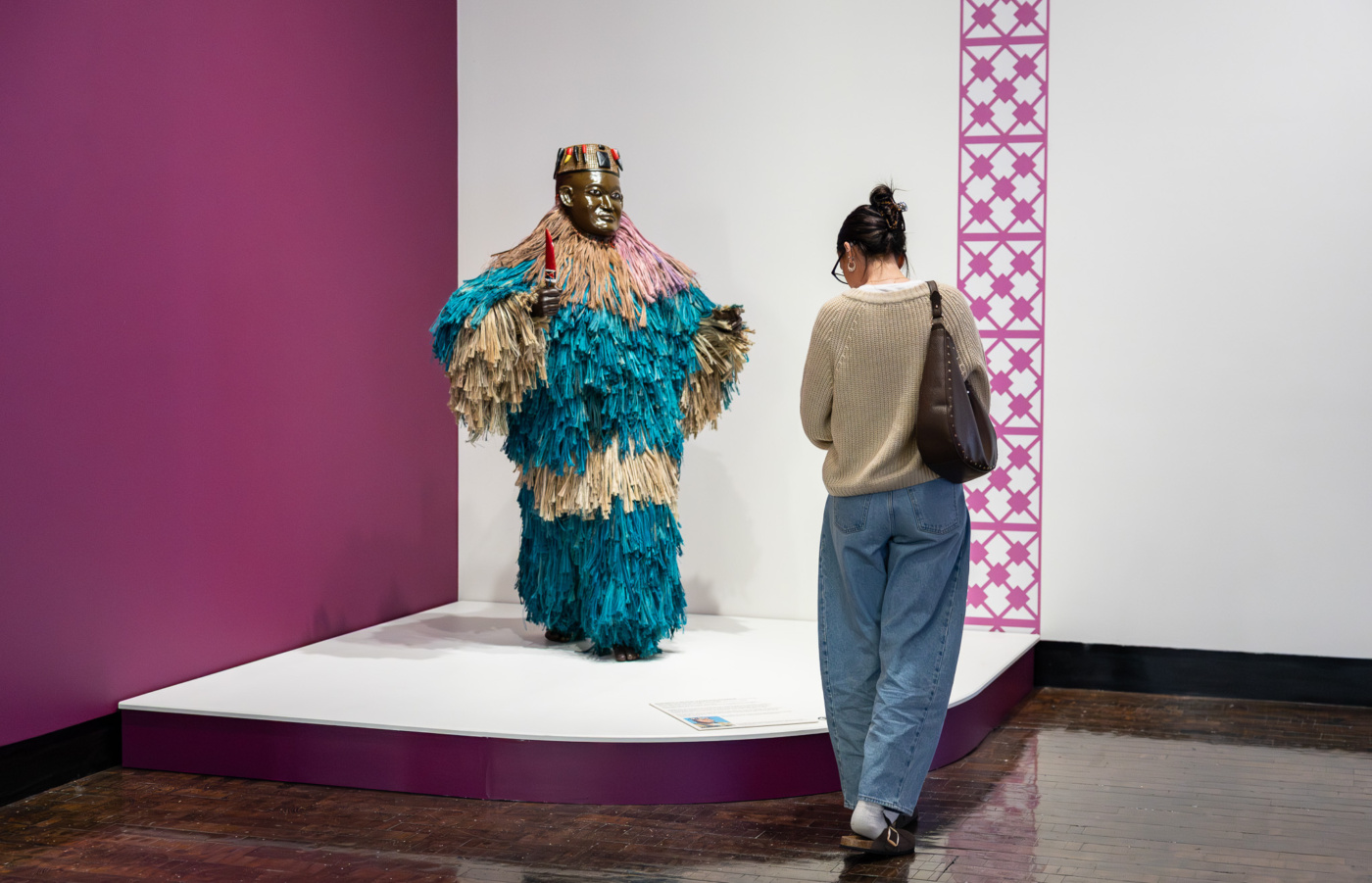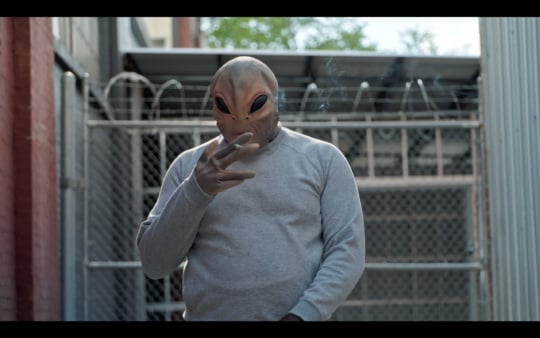
New African Masquerades: Artistic Innovations and Collaborations, on display at the Frist Art Museum in Nashville, is a celebration of contemporary African artists that continue a tradition of ceremonial costuming. On the Frist’s exhibit guide, the museum defined masquerade broadly, as “three-dimensional reflections of concepts or ideas that are presented in a public or private event wherein humans, and sometimes spirits, participate to connect to one another.” For people unfamiliar, that might not be a helpful description. Masquerade in the context of this exhibit refers to the West African tradition of elaborate costumes and headpieces often used in public ceremonies.
While masquerades are found across West Africa, the exhibit primarily focuses on the work of four working artists: David Sanou from Burkina Faso, Chief Ekpenyong Bassey NsaNigeria, Sheku “Goldenfinger” Fofanah from Sierra Leone, and Hervé Youmbi from Cameroon.

The exhibit, originally shown at the New Orleans Museum of Art, where I also saw it on display this summer, takes a unique perspective on exploring the history and practice of masquerade and includes collaboration from the artists in the curation and written descriptions. Where the NOMA show included most of the pieces in one large space, the Frist separates the artists into different rooms. There are benefits to both these options: in one room, you can easily compare the different styles against each other, while the smaller rooms allow for more deliberate contemplation of each artist.
David Sanou of Bobo-Dioulasso, Burkina Faso designs vibrantly painted wooden headpieces. In Kimi Masquerade Ensemble in honor of Andre Sanou’s ‘Qui Diet Mieux?’ (2022) two opposing profiles of antelope are housed in an ornate wooden frame painted in bold yellow and sky blue. Sanou’s headpieces are paired with the stunning ensemble worn over the body, composed of blue and pink tasseled fibers.
Sanou’s father, Andre, was the creator of the photo masquerade genre, which depicts realistic faces. In Photo Masquerade Ensemble in honor of Andre Sanou (2022), Sanou celebrates his father with a wooden carving of his face wearing a hunter’s cap. The curators brilliantly position the figures to wear Sanou’s creations as if they are in motion, giving life to the creation.

In his masquerades, Chief Ekpenyong Bassey Nsa of Calabar, Nigeria uses nylon and raffia to create flourishing embellishments around vulnerable spots on the body like the neck, wrists, or feet while keeping the rest of the masquerade simple. In an example of Idem Ikwo (2022), a popular masquerade that acts as protector in Ekpe events, Nsa’s red and black design is similar to a lion’s mane and the figure is shown holding a spear, cementing his role.
Fairy and Oli Papa Masquerades for the Jollay Society (2022) by Sheku “Goldenfinger” Fofanah with Abdulai “Dezo” Sesay show traditional Ghanaian celebration figures that were later adopted by Sierra Leone. These masquerades immediately bring to mind elements of New Orleans’ Mardi Gras Indians, with brightly colored fabric and sequins, white lace, and painted wooden faces.
Cameroonian artist Herve Youmbi provides a post-modern lens to his work. With Tso Scream Mask (2022) the headpiece of Youmbi’s mask is a white and black beaded version of the Ghostface mask from the Scream movie franchises. It’s at once a stark reminder of modern globalization, but also feels appropriately homed within the rest of the masquerade, which uses traditional Cameroonian beadwork designs. Youmbi uses the gallery descriptions as an opportunity to critique certain museum practices, writing his own descriptions and comparing them with traditional museum descriptions; highlighting the distinct ways American museums discuss African art.


This exhibit contains the most dynamic video experience I’ve ever seen. Created by LEVR Studios, the seventeen minute video visits each of the artists and provides viewers the opportunity to see the masquerades in performance in a 360° immersive form. The masquerades are activated when worn and shown in movement. Not only does the viewer gain respect for the art and the wearer, but witnessing an entire community come together truly emphasizes the cultural impact of the masquerades. The movement, not always a dance, is a work of art itself, sometimes staccato footwork, sometimes a slow pantomime.
The exhibit is a wonderful collection of inspired masquerades, and provides an excellent education on what is likely a lesser known art form to many Americans. The masquerades are wearable, moveable pieces of art created to convey joy, grief, and everything in between. I left this exhibit, both times I saw it, inspired and wistful. As a Black American, I felt I had witnessed the artistry from a home I’ve never physically been to. I could trace the lasting impact of the West African masquerades in Mardis Gras and Carnival costumes, in dances that look just at home in a funerary rite in Burkina Faso as they do on Tik Tok, and in Black people’s desire to commune with each other through costume and movement across the globe.





